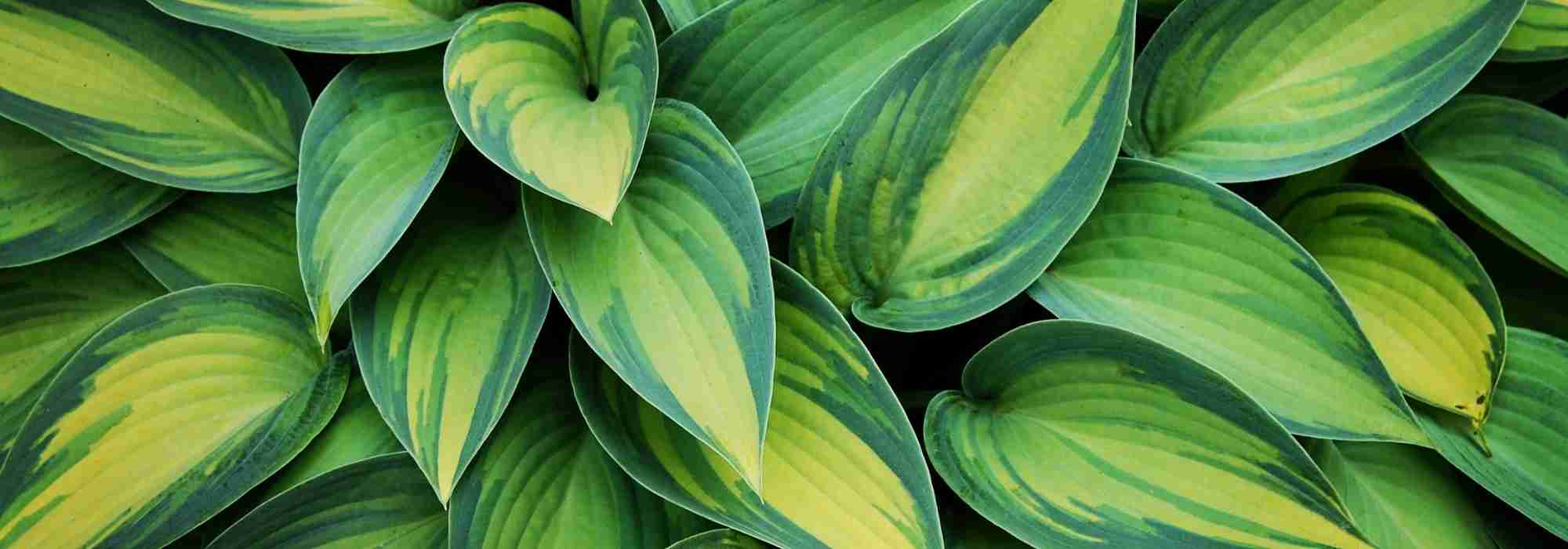
Choosing Hostas
How to choose among the many Hosta varieties?
Contents
Not as widespread a few decades ago, Hostas have become stars of shady gardens, with their ample foliage, often velvety or textured, in wonderful green, bluish, variegated or marginate tones… They can transform a shady corner or a terrace whose aspect makes it a little dull into a luxuriant, exotic world thanks to their leaves, beautifully veined or puckered. While it is their verdant character that irresistibly charms, allowing creation of sumptuous foliage beds, their flowers are of great interest for some cultivars, and even… their scent!
Hosta sieboldiana is often encountered, but also Hosta plantaginea (more compact), Hosta undulata, Hosta tardiana or Hosta tardiflora… there are nearly 70 species and countless varieties. They are unquestionably essential, fully hardy, and you will discover that their dimensions allow planting almost everywhere, especially as they can even tolerate sunny exposures! Here are some tips to choose them according to your requirements.
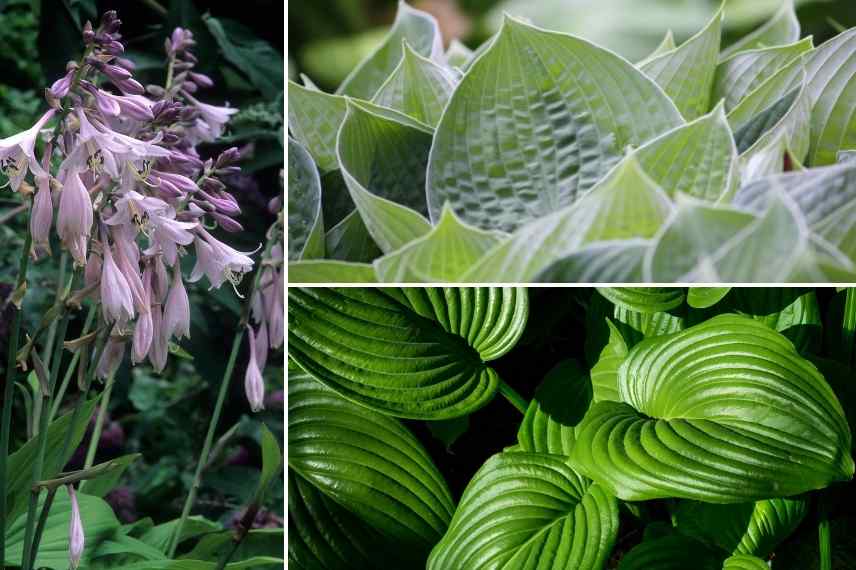
Welcome to the wonderful world of Hostas!
→ Also discover our complete guide Hostas: planting, cultivation and maintenance
Depending on their dimensions
Hostas offer a wide range of sizes, from the smallest measuring under 40 cm, suited to small gardens, containers or narrow borders, to medium-sized Hostas, perfect as groundcover, in beds or containers, up to giant Hostas that reach enormous statures at ripeness with heights and spreads approaching 1.30 m.
‘Mini’
Well worth discovering for their adaptability to many situations: ‘Ground Master’ remains small at about 25 cm high but spreads to 50 cm, ‘Praying Hands’, with its curiously rolled and tapering leaves, fits in almost anywhere at 30 cm high, ‘Mama Mia’ is notable for a 70 cm spreading and its low height, and ‘Blue Mouse Ears’ is a charming dwarf variety with bluish colouring.
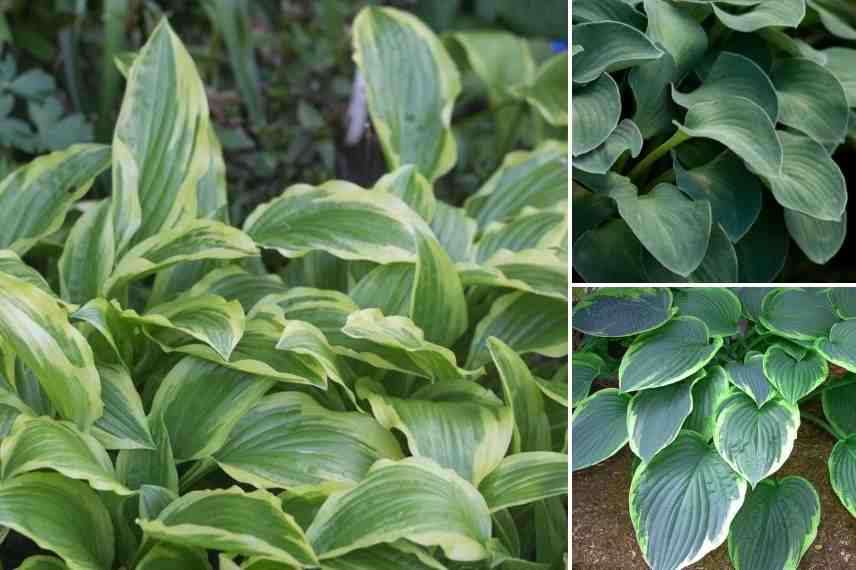
Hosta ‘Ground Master’, ‘Blue Mouse Ears’ and ‘El Niño’
→ Discover our wide range of dwarf Hostas and our selection of 4 dwarf Hostas
‘Intermediate’
Forming a clump between 40 and 80 cm in all directions, this is the size of the vast majority of Hostas; they can be used everywhere in the garden and even in large containers. They generally reach these dimensions in 2 to 3 years, depending on your soil. Some are highly ornamental, such as the superb ‘Frances Williams’, variegated in blue and acid-green, ‘Francee’, white-marginate, ‘Paul’s Glory’, and many others…
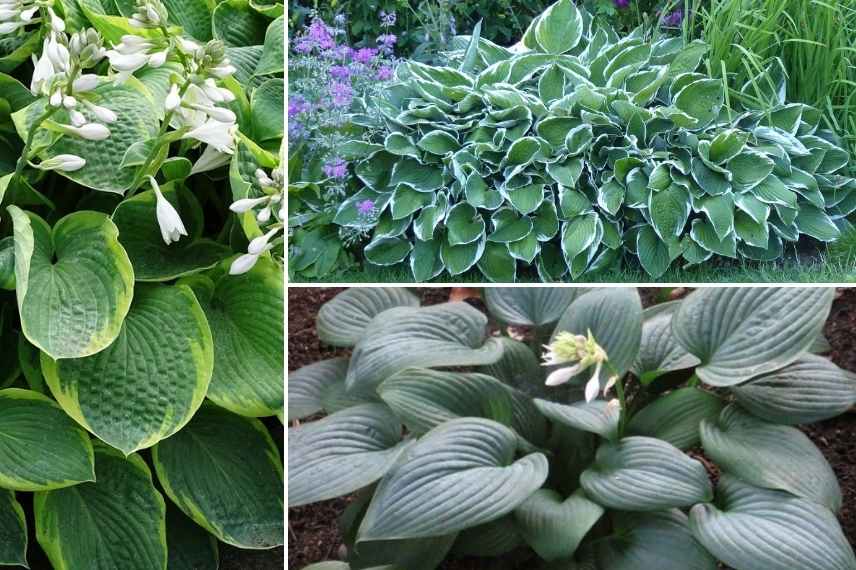
Hosta ‘Frances Williams’, Hosta ‘Francee’ and Hosta ‘Fragrant Blue’
‘Giant’
XL-sized, they measure 1.30 m to 1.50 m in all directions, have immense leaves and are absolutely magnificent in large beds where they become the focal point. Use them as structural plants, for example alongside Hydrangeas: Hosta ‘Empress Wu’ or ‘Jurassic Park’, with attractive bluish-green tones, deserve a prominent position. The cultivar ‘Sum and Substance’, with light green foliage, also reaches imposing dimensions and produces very large leaves.
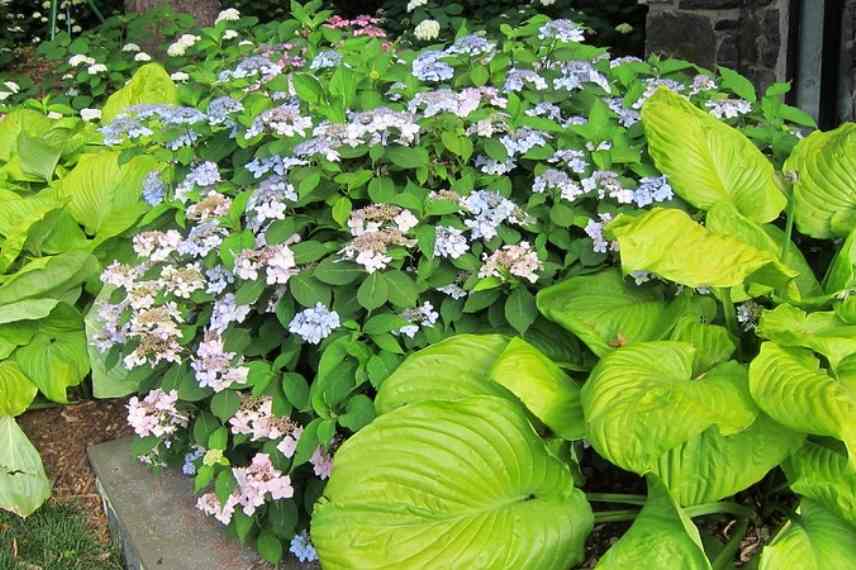
Generous Hostas ‘Sum and Substance’ hold their own against Hydrangeas (© K M)
→ Discover our selection of the largest Hostas and our advice sheet on the most spectacular varieties
Read also
Hosta: planting, growing and careBy foliage colour
The colour palette among hostas is one of the most interesting: it covers every shade of green! Here are some, from classic favourites to more recent introductions. Have fun pairing and combining them in borders or container gardens :
- Solid greens, from anise-light, golden green such as ‘Sum and Substance’ or lemon-yellow like ‘Purple Heart’, mid-green in ‘Sweet Susan’, deep green in Hosta ‘Ventricosa’, to olive green :
- Bluish: cult classic ‘Halcyon’ or timeless Hosta sieboldiana, ‘Krossa Regal’ with narrow leaves, ‘True Blue’ or ‘Canadian Blue’ with a magically velvety blue
- Yellows: almost fluorescent ‘Fire Island’, ‘Zodiac’ and ‘Summer Breeze’ — a very luminous soft green that turns yellow
- Variegated: famous Hosta ‘June’ and its contrasting bluish striate markings on an anise-coloured centre, ‘Carnival’ dark green with yellow and cream variegation, ‘Christmas Candy’, etc…
- Bicoloured: Hosta undulata ‘Mediovariegata’ green and white or Hosta sieboldiana ‘Frances Williams’ with superb contrast of a bluish centre broadly edged or even variegated with anise green
- Yellow- or cream-margined: Hosta ‘Orange Marmelade’ with a yellow centre edged in blue-green, ‘Delta Dawn’ with very luminous leaves edged with cream, or ‘Stilleto‘ whose margin will gradually turn cream…
- White-margined: ‘Fortunei Francee’, ‘Fireworks’, etc.
- Blue-margined: astonishing Hosta ‘Paul’s Glory’!
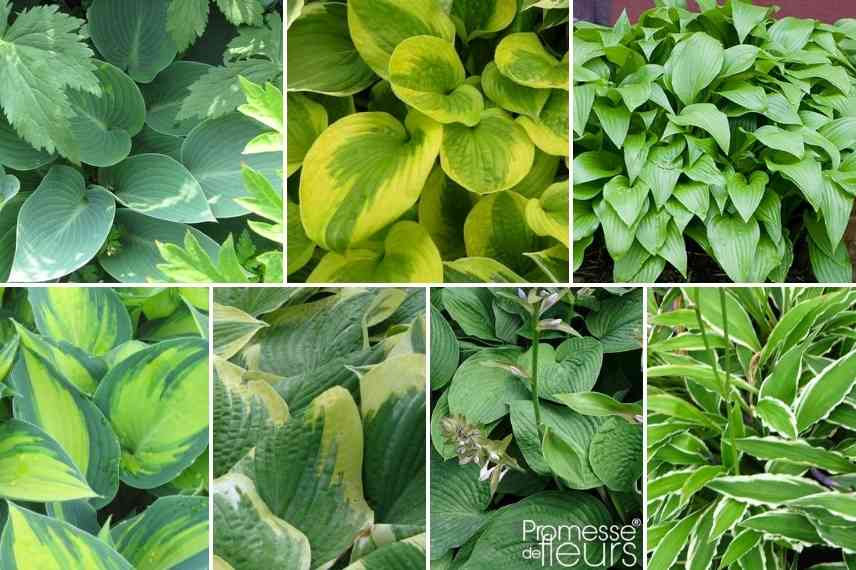
From top left to bottom right: ‘Halcyon’, ‘Summer Breeze’, ‘Suzanne’, ‘June’, ‘Robert Frost’, ‘Jurassic Park’ and ‘Stilleto’
Discover our articles: Most beautiful variegated Hostas, Blue Hostas: most beautiful varieties and Best Hostas with yellow or golden foliage to brighten the garden.
Discover other Hostas - Plantain Lilies
View all →Available in 1 sizes
Available in 2 sizes
Available in 2 sizes
Available in 1 sizes
Available in 1 sizes
Available in 1 sizes
Available in 1 sizes
Available in 1 sizes
Available in 2 sizes
Available in 1 sizes
According to their flowering
It is foliage that catches the eye on Hostas, and they are generally chosen for their highly decorative leaves either as groundcover in a shaded border, or as plants adding luxuriance in a pot or ornamental garden.
That said their flowers, although discreet, add to their appeal particularly in late summer when they rise above the verdant clump. They are particularly beautiful in large drifts within borders. Hostas flower mainly between June and September, the vast majority in midsummer. The tubular flowers display soft shades — white, pale mauve to mauve, or lavender blue and are clustered along the stem. Note, however, these delicate trumpets tend to be rather trailing.
Les Hostas plantaginea possess the largest flowers, sometimes double or semi-double as in ‘Aphrodite’. Hosta ‘Honeybells’, whose inflorescences hang gracefully like bells, and Hosta ‘Royal Standard’ are also notable for the size of their flowers (5 to 8 cm).
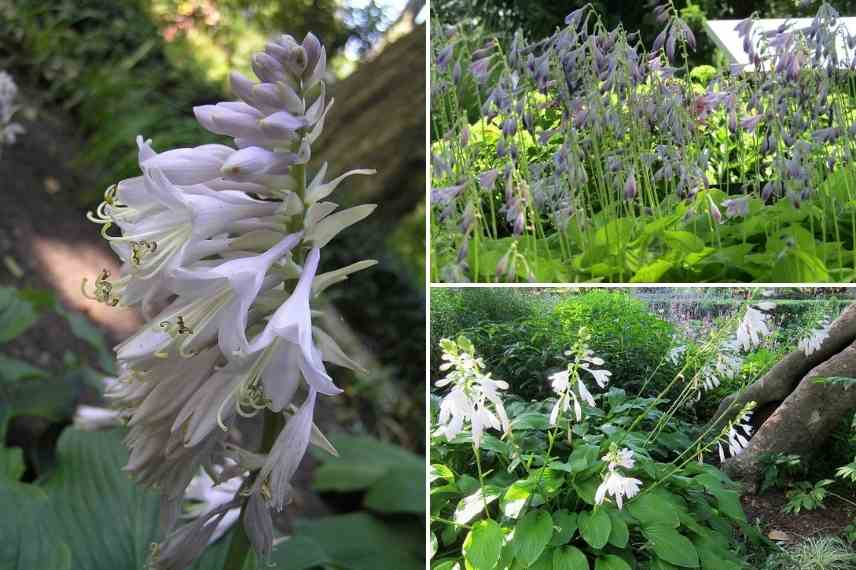
Flower of Hosta plantaginea (© HQ), mauve mass flowering (© Leonora Enking), and bottom right Hosta ‘Honeybells’ (© K M)
Based on their resistance to gastropods
Admittedly, the big problem with Hostas is that they are one of the most popular treats for garden slugs and other snails. They love, to say the least, their slightly thick, very appetising, deliciously crunchy leaves… Who hasn’t found their Hosta proudly unfurling its leaves in spring cruelly shredded by a nasty gastropod that spent the night nearby?
One reason for this is that nurserymen have introduced new varieties with tougher foliage that are particularly resistant to slugs and snails. Many blue Hostas are, oddly, not favoured by gastropods (‘Halcyon’, ‘Big Daddy’, ’Prairie Sky’, ’Blue Mouse Ears’ among others). Among classics, ‘Frances Williams’, ‘Francee’, ‘Great Expectations’, ‘Empress Wu’ are renowned for their resistance to slugs and snails, as are recent thick-leaved cultivars such as ‘Pizzazz’.
In any case, a good coarse mulch remains good protection against these enemies, not least because it keeps soil cool, which is essential. Finally, plant Hostas in groups rather than singly, as isolated specimens are often prey to nasty gastropods. Larger clumps seem to form a good barrier against attacks.
→ Find our article: 9 Hostas resistant to slugs
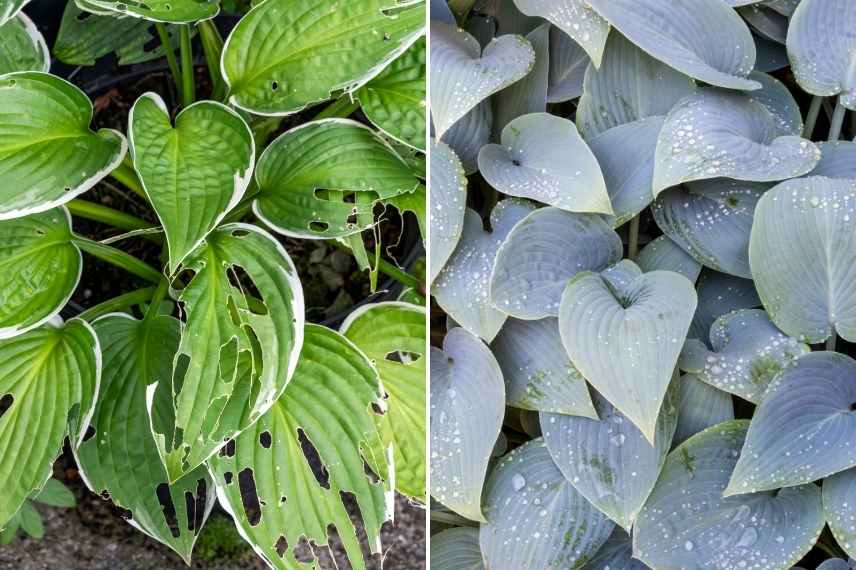
To avoid worst, favour blue-tinged Hostas, thick-leaved forms or recent cultivars.
Depending on exposure
Considered shade-loving rhizomatous perennials, Hostas still need a little sun, provided it is not scorching, to develop fully, especially to flower well.
Blue-tinged foliage copes best with deep shade, their bloom protecting them and enhancing their characteristic colour. Too much sun damages this fine waxy layer and reveals greener foliage.
Variegated foliage brings natural brightness, so it is ideal in shade and stands out in partial shade.
In reality, for most cultivars, morning and late-afternoon sun suit them best, and a few hours are very beneficial, with filtered light being ideal.
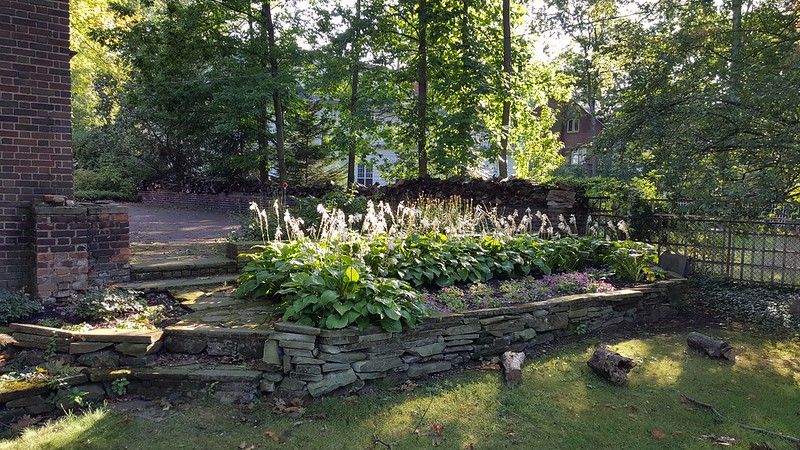
Filtered light or late-day sun suits Hostas very well (© Tim Evanson)
By fragrance
It’s not the first criterion gardeners think of when buying a Hosta, but some are worth a sniff. This is the case with XXL white flowerings, such as Hosta ‘Honeybells’ and Hosta ‘Royal Standard’ which boast white flowers whose fragrance recalls orange blossom.
The Hostas plantaginea, also referred to by English speakers as “fragrant plantain hostas,” are themselves delicately scented. Hosta plantaginea ‘Grandiflora’, has a very pleasant lily-like fragrance. Its large flowers have the particularity of opening in the afternoon. Hosta plantaginea ‘Aprhodite’ blooms in late summer with double white flowers scented like orange blossom.
Plant these Hostas near a well-used path to enjoy their scents, which remain fairly subtle.
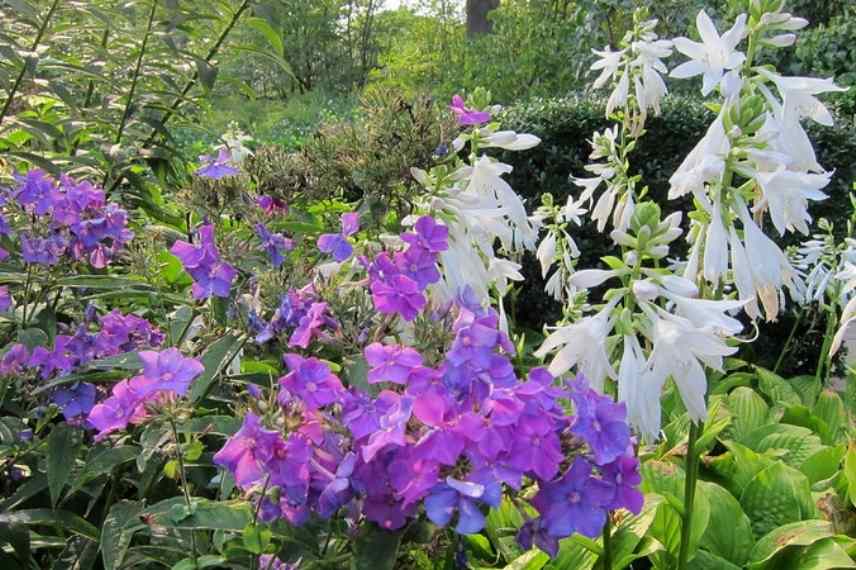
Hosta ‘Royal Standard’ and Phlox paniculata ‘Blue Paradise’ (© K M)
Depending on the shape and appearance of the foliage
You will most likely base your choice mainly on the criteria mentioned above, but it is interesting to note that although Hostas generally display superb cordate foliage (all Hostas sieboldiana or variety ‘Blue Umbrellas’ for example), some have more ovate shapes, others more lanceolate, that is, narrow, like original ‘Praying Hands’ with its long narrow, rolled leaves, ‘Ground Master’, ‘Krossa Regal’ or ‘Stiletto’. It is worth combining not only the various colours but also leaf shapes in your larger beds in particular.
Wrinkled textures and remarkably veined leaves are notably found in Hosta ‘Frances Williams’, ‘Blue Umbrellas’, ‘Sugar Daddy’, ‘Unforgettable’ or ‘Pizzazz’.
Finally, some are particularly notable for the size of their leaves, such as ‘Empress Wu’ with enormous leaves up to 50 cm long, or the smaller but nonetheless magnificent ‘Gold Standard’ (leaves around 18 cm).
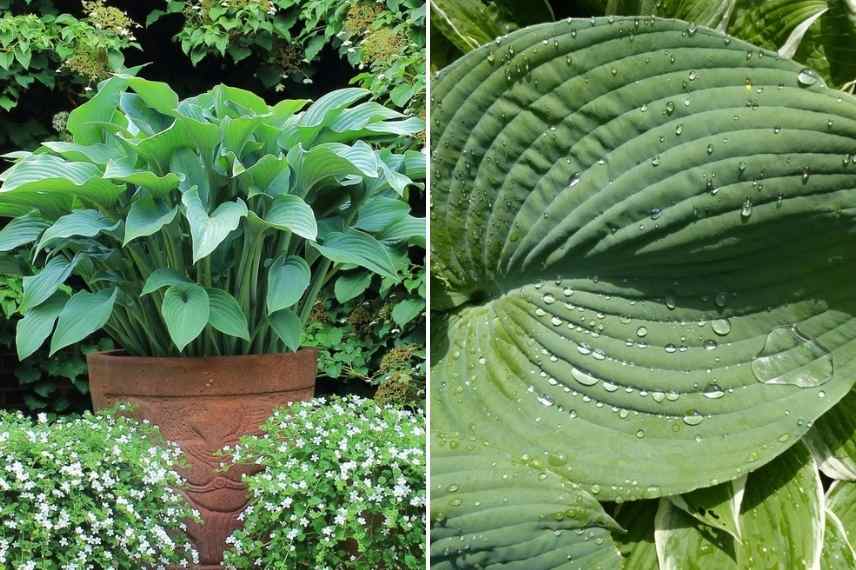
Hosta ‘Krossa Regal’ and Hosta ‘Blue Umbrellas’
- Subscribe!
- Contents
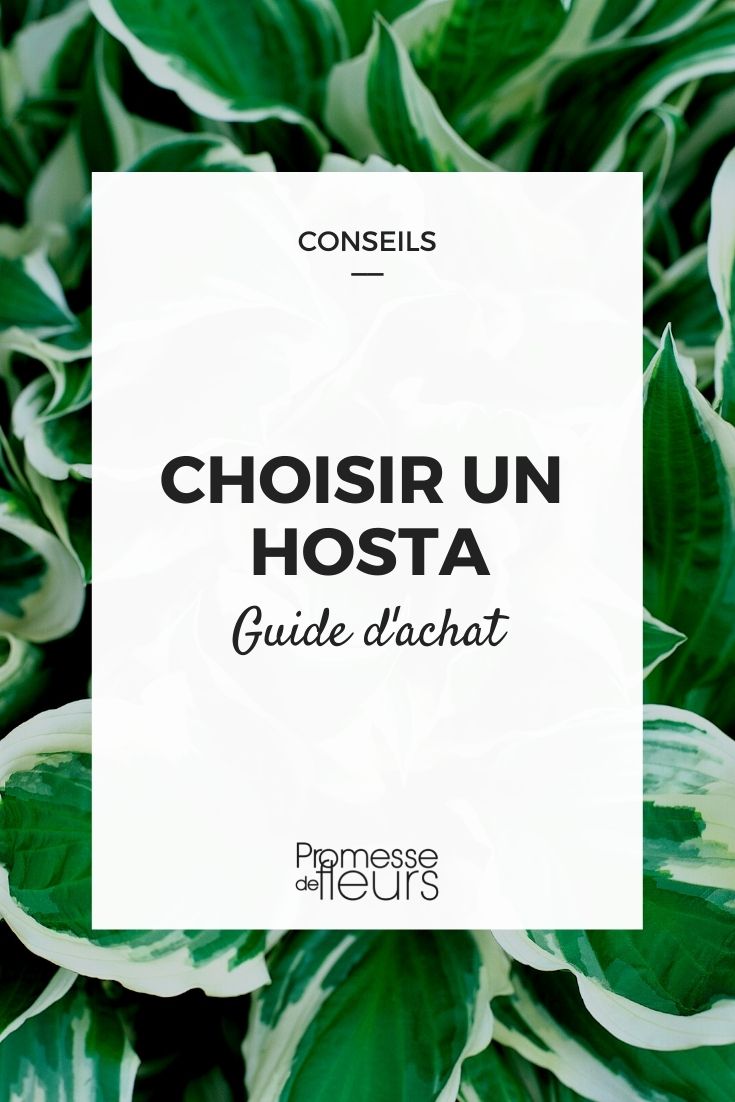































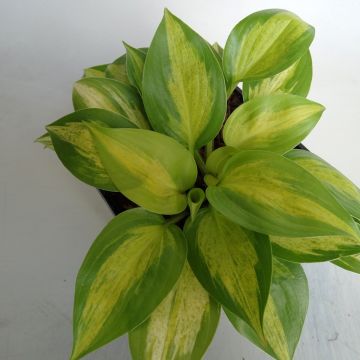
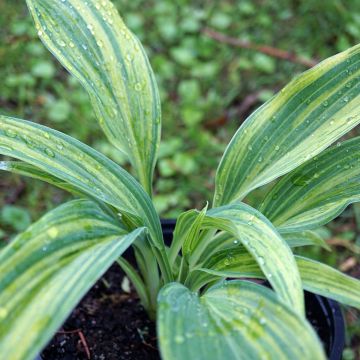
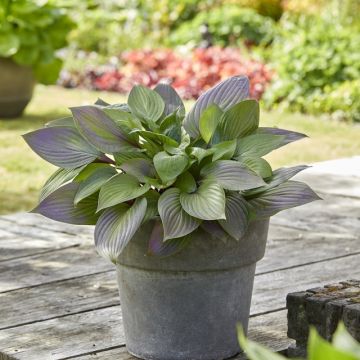
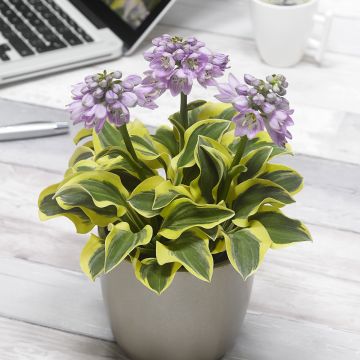
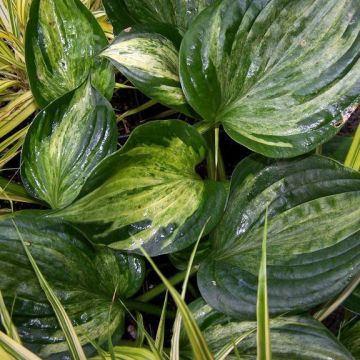
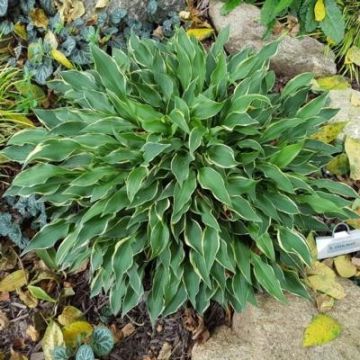
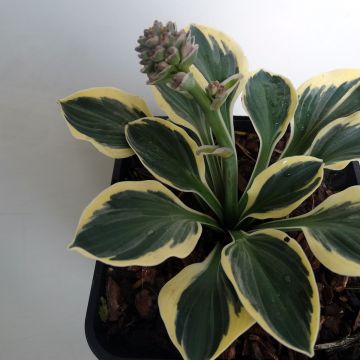
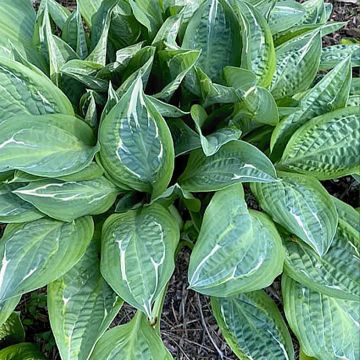
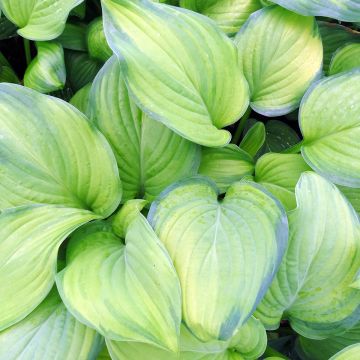
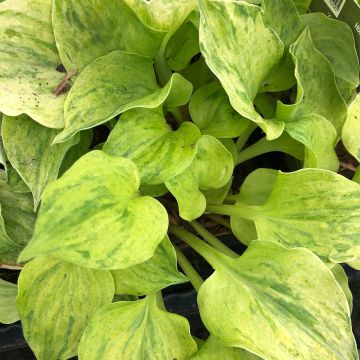
Comments